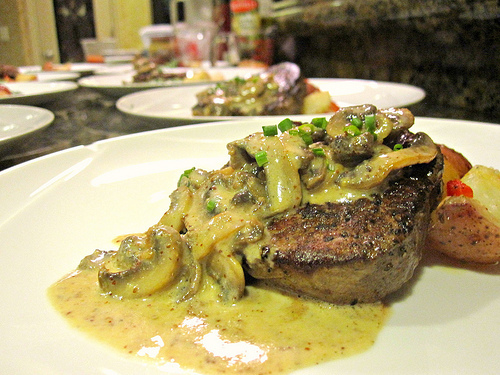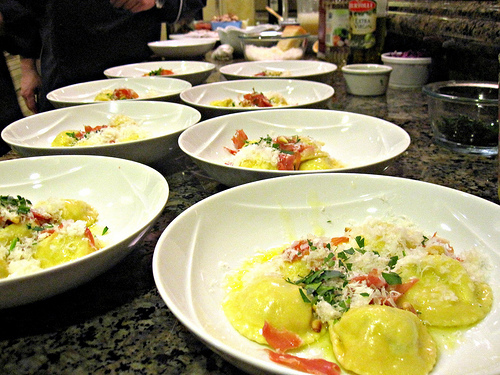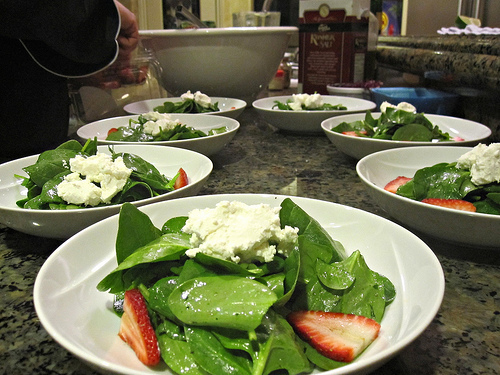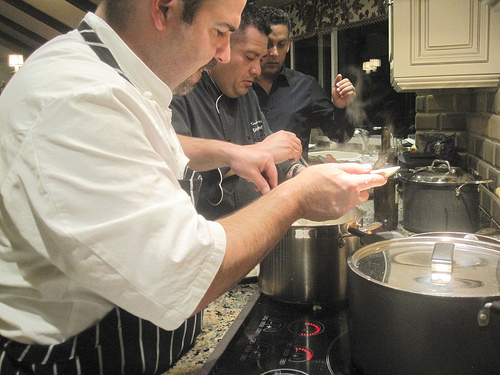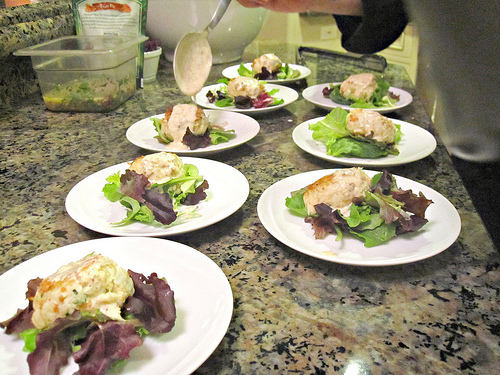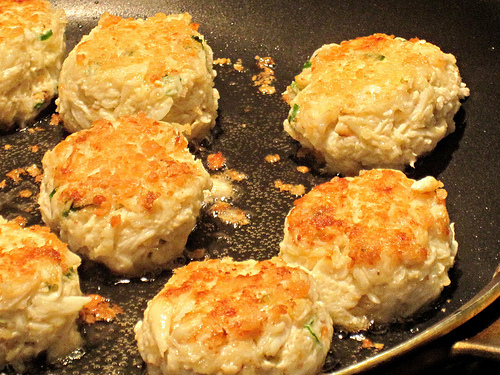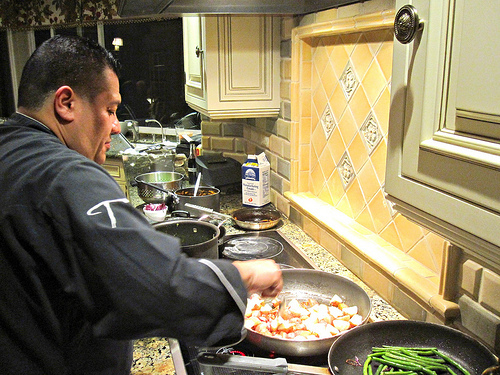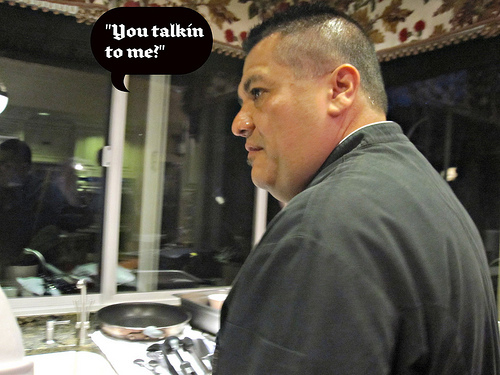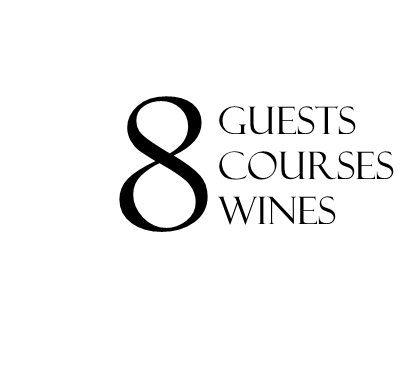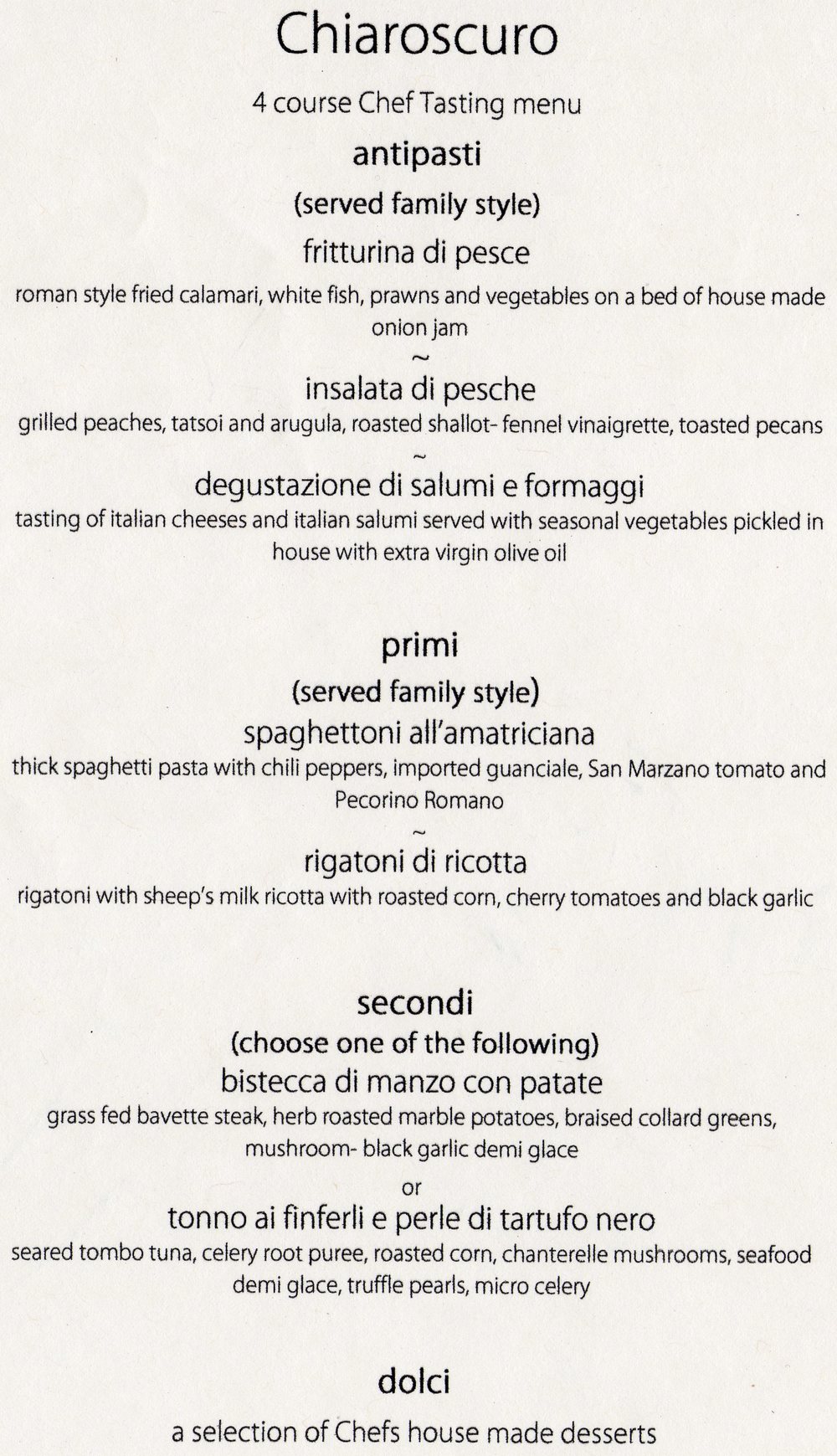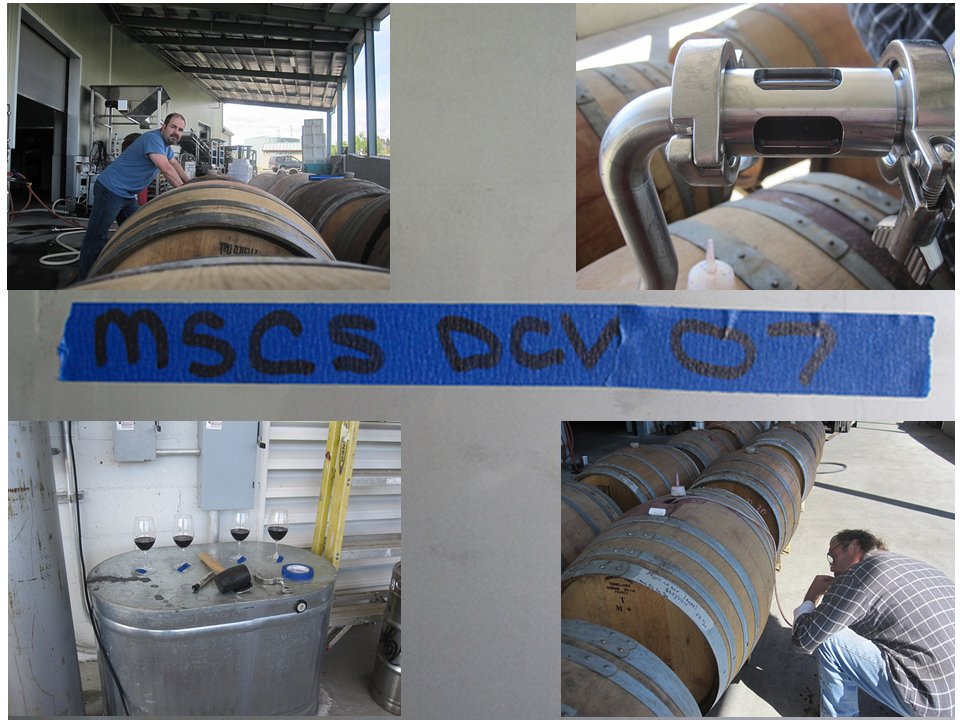Part 2 of Who Wants to Try a $500 Wine?
20 minutes after I got through with Shackelford, I attended a private tasting at long-time friend John Marihart’s house. Back in the restaurant game, John was on hiatus from the restaurant business to start a family and a successful second career in the technology business before returning to the food and beverage business to open a prime steakhouse. John has goals; big goals, because just like in Road House, John will get enough sleep when he’s dead.
The double blind tasting was conducted by Sommelier Vincent Cho. I was certainly ‘warmed up’ from tasting with Shackelford.
The highlight of the tasting, was the flight of Cabernet. My Jedi senses were strong late in the day, as I yakked poetically about Chateau Montelena in Napa, the stylistic nuances it has along with the historic Paris tasting, fresh with the memory of the more modern Schrader/Scarecrow/Hourglass in my brain. Knowing there was at least one French Bordeaux in my flight, I didn’t guess Lynch Bages, but was very happy to be moving back and forth, pondering between the Montelena and the Lynch Bages. The third wine in the flight, a ‘new American’ Matthiasson Cabernet was more about contrast in the flight, as the wine was very lean and acid driven. In the perfect world and combining both the Shackelford and Marihart/Cho tastings, going from a Matthiasson to Forman to Lynch Bages to Montelena to Schrader would be an incredible example of Cabernet in a range of styles and the history of California winemaking.
As a Cabernet winemaker, I want luxury in my young Cabernet, not lean fruit and mouthfuls of acid. If I’m pulling a cork on a $60 Cabernet I want it to drink luscious, not lean. I want decadent, not demure. Dark black brooding fruits, not red cheery cherry fruit. If I wanted lean and full of bright red fruit, we had one in our blind flight, the Jolie Laide Gamay Noir from El Dorado County. Lean and mean, it was all bright red acidic fruit and perfect to drink early with cheese and country pate’, not a steak.
Other standout wines included a Krug Grande Cuvee 163rd edition, a flight of Chardonnay, 1st Cru Meursault from 09 and 16 and the Rajat Parr project Sandhi Mt. Carmel SRH. A great comparison of wines from both old and new world, yet strikingly similar in style, but that seemed to be the point. Another Somm project, Gramercy Cellars 2014 Lagniappe Syrah from Washington was dense and rich and opened up nicely, I went back to it with some of the smoked tenderloin that was offered for dinner. The final two wines of the tasting were a Brunello and a Rioja, textbook style Brunello that was my first real drink with dinner (meaning, I was done spitting) and a Rioja that was built for the American or export palate, showing the presence of the American oak in the front and mid palate.
Not every wine is a great wine in these tasting formats. From the Marihart/Cho tasting, I’m still not a big fan of whole cluster fermentations. The green character they exude when whole cluster is being done for the sake of being called whole cluster is no different than putting 100% new oak on Cab because it checks some box, it is lazy wine making for the sake of being cool. When whole cluster ferments taste like yalanchi filled with green peppers dipped in a wheatgrass sauce, it didn’t work out the way you planned and don’t excuse it for terroir, it’s not terroir, it's sloppy and a poor experiment.
I'm looking forward to my next double blind tasting experience with Marihart Inc....carrying on 35 years of tasting everything from Keystone Light to Grand Cru Bordeaux.



















